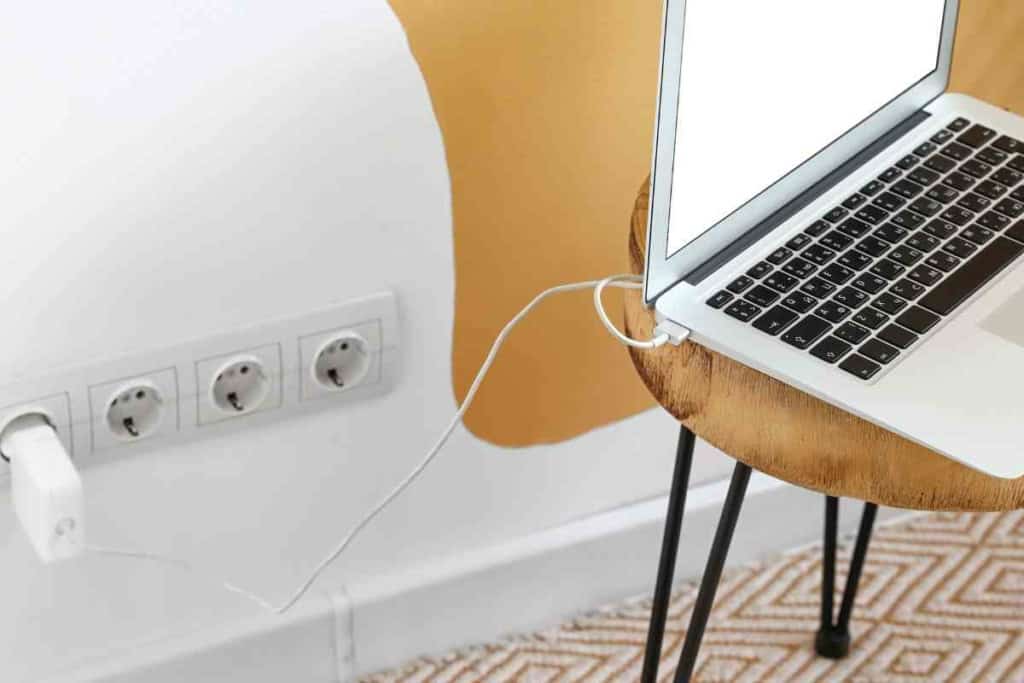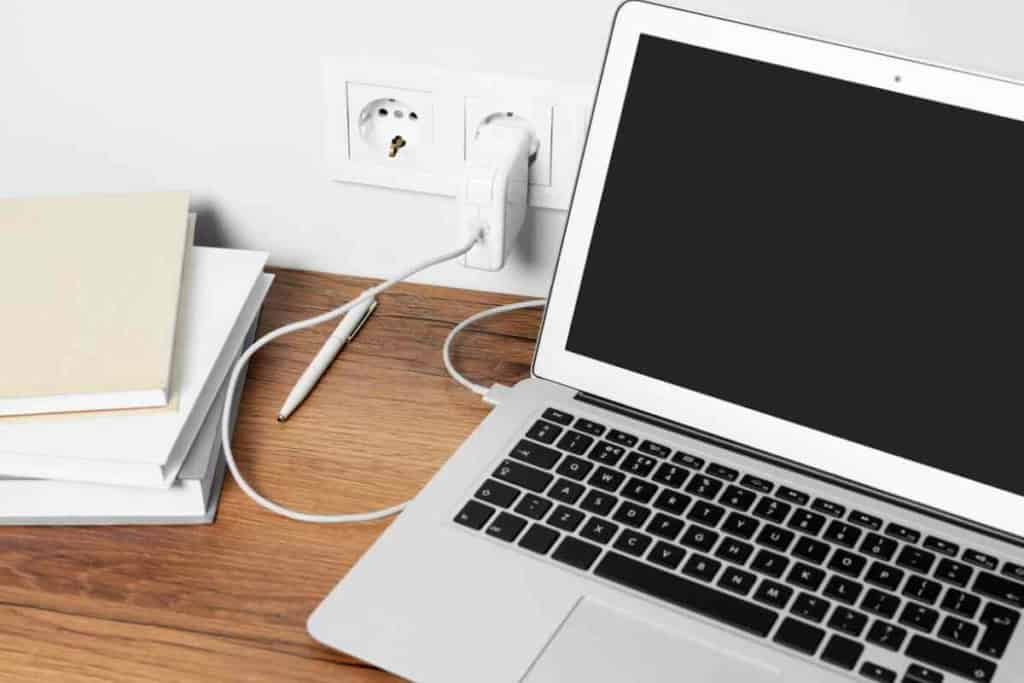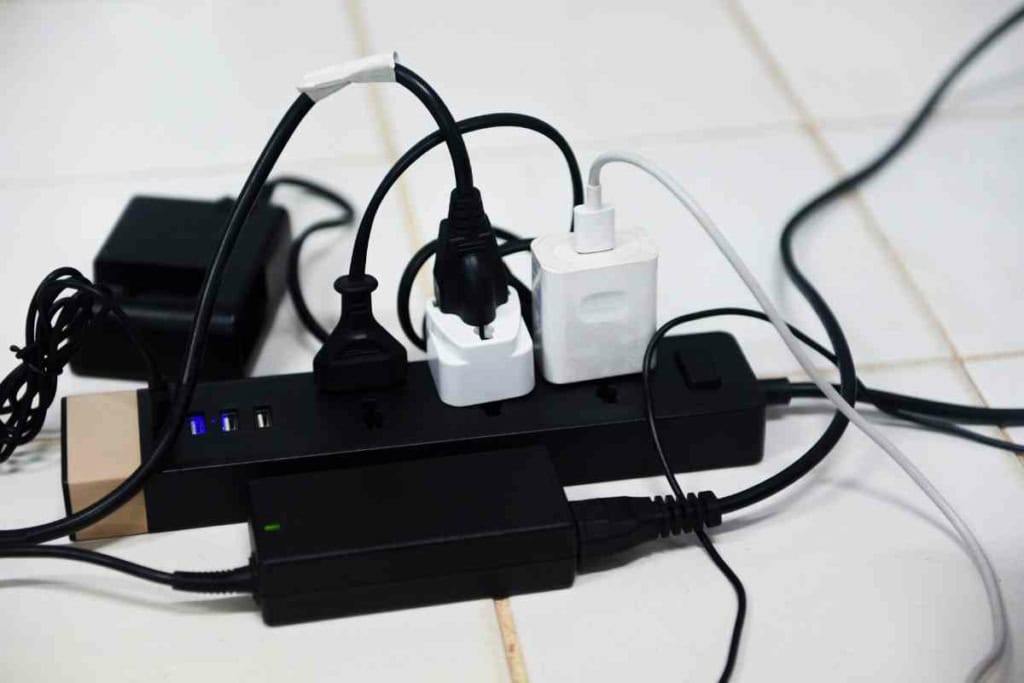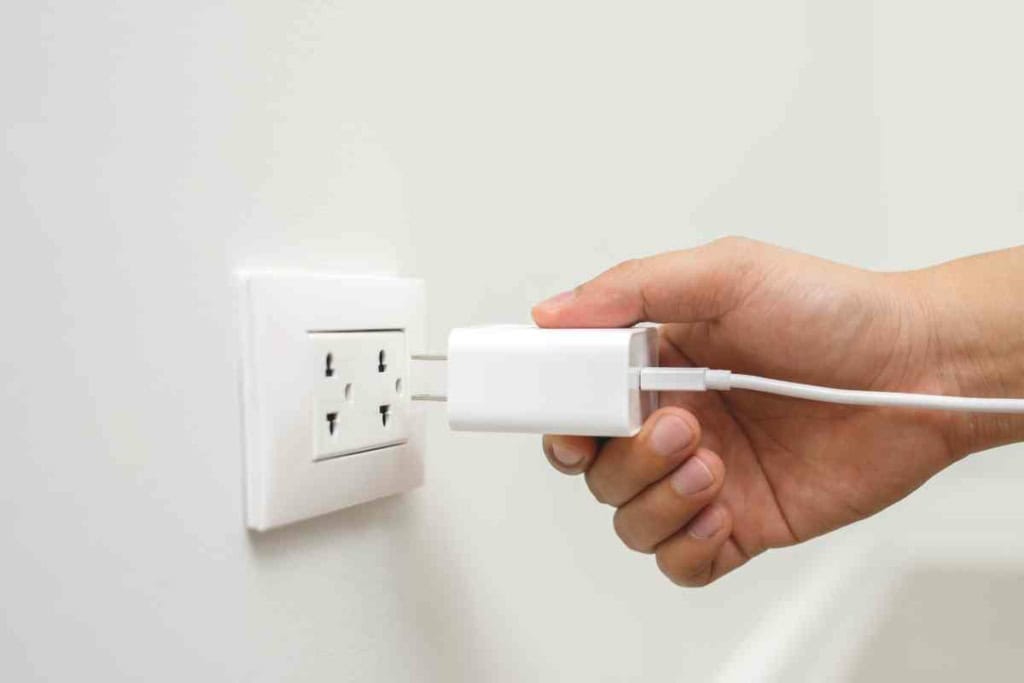How Many Watts Does It Take to Charge Your Laptop?
Are you using the right wattage to charge your laptop? This might seem like a simple question, but the answer can significantly impact your laptop’s performance and battery life. Let’s delve into what factors you should consider to optimize your laptop’s charging process and ensure its longevity.

Related Post! Here’s What To Do When Your Laptop Will Only Turn On When It’s Plugged In
How Many Watts Does It Take to Charge Your Laptop?
The wattage required to charge a laptop typically ranges from 30 to 200 watts, depending on the model and its specific power requirements. Standard laptops often need about 45-65 watts, while high-performance gaming laptops may require up to 200 watts to ensure efficient charging and optimal operation.
Every laptop has unique power requirements, influenced by the model and internal components. For instance, gaming laptops usually demand more power compared to standard laptops because of their robust graphics cards and processors. On the other hand, laptops with large screens or high-resolution displays also tend to consume more power. Recognizing these differences is key to choosing the correct wattage for your device, enhancing both efficiency and safety.
How to Determine the Right Wattage for Your Laptop
- Check the Specifications: Your laptop’s required wattage can typically be found on the manufacturer’s website or in the user manual. This is your starting point.
- Measure Actual Usage: For a more hands-on approach, consider using a power meter to directly measure how much power your laptop consumes during charging.
- Choose the Appropriate Charger: Always use a charger that corresponds to your laptop’s specifications. A charger with too low a wattage might slow down charging times, whereas one with too high a wattage could potentially harm the battery or pose safety risks.
Practical Tips for Efficient Charging
- Unplug Once Charged: Avoid leaving your laptop plugged in all the time. This can lead to energy waste and may decrease your battery’s lifespan. Utilize your device’s power management settings to stop charging at a certain battery level.
- Regular Checks: Periodically review your charging habits and equipment to ensure everything is in optimal condition. This simple step can save you from future hassles.
Types of Laptop Chargers

Choosing the right charger for your laptop is crucial for ensuring efficient power management and safeguarding your device. Here’s a breakdown of the main types of laptop chargers you might encounter and how to select the best one for your needs.
AC Adapter
Often referred to as the power or wall adapter, the AC adapter is the traditional choice for charging laptops. These adapters convert AC power from your wall outlet into DC power that your laptop can use.
With wattages typically ranging from 30 watts to 90 watts, AC adapters can vary in charging speed. It’s vital to match the wattage of the AC adapter to your laptop’s specifications, which can be found in the user manual or manufacturer’s website, to avoid potential damage or inefficiencies.
USB-C Charger
The modern USB-C charger stands out for its versatility and portability. Designed to connect via a USB-C port, these chargers are not only capable of powering laptops but can also charge phones and tablets equipped with the same port.
Wattages for USB-C chargers can extend from 30 watts to over 100 watts. Their efficiency means they can often charge devices faster than AC adapters, even at lower wattages.
GaN Charger
Employing cutting-edge gallium nitride technology, GaN chargers pack more power into a smaller package. They are the epitome of efficiency, producing less heat and saving energy while being significantly more compact than both AC and USB-C chargers.
Although GaN chargers range in wattages similar to USB-C chargers, they tend to be pricier. However, their versatility and performance justify the cost for many users, especially those frequently on the move.
Considerations for Different Laptop Models
Each laptop model has specific power requirements, and using an incompatible charger can lead to damage or inefficiencies. Here’s what you need to know about some popular types:
Related Post! HP vs Acer Laptops: Which Brand is Right for You?

Dell Laptops
Dell is synonymous with reliability. Models like the Dell Inspiron 15 3000 require a 45-watt charger, whereas the Dell XPS 13 needs a 65-watt. Always verify the wattage requirements from Dell’s resources before making a purchase.
MacBooks
Apple’s MacBooks blend sleek design with robust performance. The MacBook Air works best with a 30-watt charger, while the MacBook Pro models may require 61 watts or 87 watts depending on the specifications.
Gaming Laptops
Designed for power, gaming laptops like the Dell G5 15 and ASUS ROG Zephyrus S demand much higher wattages, from 130 watts to 230 watts. Ensuring you have the correct wattage is crucial for handling the intensive operations of gaming laptops.
Chromebooks
Known for their simplicity and efficiency, Chromebooks like the Acer Chromebook 14 and HP Chromebook 14 typically need lower wattages, around 45 watts to 65 watts. This reflects their design for energy efficiency and straightforward functionality.
Related Post! Chromebook vs Laptop: Pros and Cons Compared
Components Affecting Laptop Power Consumption
Understanding your laptop’s power consumption and choosing the right charging approach is essential for maintaining battery health and maximizing performance. Let’s explore the key components that influence power consumption and the essentials of an effective charging process.
- CPU and GPU: The Central Processing Unit (CPU) and Graphics Processing Unit (GPU) are pivotal in determining your laptop’s power draw. High-performance CPUs and GPUs not only enhance computing power but also increase energy consumption. Typically, more cores and higher performance equate to greater power use.
- Display: The size and resolution of your laptop’s screen significantly affect its power consumption. Larger and higher-resolution displays require more power, which can drain battery life more quickly.
- Peripherals: Devices such as external hard drives, mice, and keyboards, when connected, draw power from your laptop’s battery. Even features like Bluetooth, when enabled, continuously consume power, albeit small amounts, which can add up over time.
Understanding the Laptop Charging Process
When it comes to efficiently charging your laptop, several factors come into play:
- Power Sources: Laptops can be charged through various sources such as AC adapters, USB ports, and power banks. AC adapters are generally the most effective, providing a stable and consistent charge. USB ports offer convenience but might not always deliver the fastest charge due to lower power output.
- Output, Voltage, and Current: The charger’s output, along with its voltage and current, must align with your laptop’s specifications to ensure efficient charging without risking damage to the battery.
- Power Delivery (PD): Power Delivery technology facilitates faster charging by delivering higher power levels to the device. USB-PD, in particular, allows for the simultaneous transfer of data and power, streamlining connectivity and charging through a single cable.
- Connector Type: It’s important to use a charger with a connector that matches your laptop’s port. While many new laptops feature USB-C ports, others may have proprietary connectors.
- Third-Party Chargers: If opting for a third-party charger, verify its compatibility with your laptop. It should meet the necessary output, voltage, and current specifications to safely charge your device.

Practical Tips for Efficient Laptop Charging
- Match Charger to Laptop Requirements: Always use a charger that matches the specifications recommended by your laptop’s manufacturer.
- Monitor Peripheral Usage: Disconnect peripherals when not in use to conserve battery life.
- Enable Power Saving Settings: Utilize your laptop’s power management features to reduce power consumption when on battery.
- Regularly Update Software: Keeping your operating system and drivers up to date can help optimize power management.
- Consider Third-Party Chargers Carefully: Ensure that any non-original charger you use is certified and compatible with your laptop to avoid potential damage.
By understanding how different components affect power consumption and adhering to best practices for charging, you can significantly enhance your laptop’s performance and extend its lifespan.
Related Post! How to Calibrate Your HP Laptop Battery: A Step-by-Step Guide
Optimizing Power Usage for Laptops
Laptops have become indispensable in our daily lives, but they can also be significant energy consumers. Adopting strategies to optimize power usage not only curbs energy consumption but can also lead to savings on electricity costs. Here’s how you can enhance your laptop’s energy efficiency, followed by crucial safety tips for charging.
Embrace Sleep Mode
Incorporating sleep mode into your laptop usage can drastically reduce power consumption. Sleep mode powers down your laptop to a low-energy state when it’s not in use, allowing for a quick wake-up when you return.
To enable sleep mode, access your power settings and adjust the inactivity period after which sleep mode activates.
Manage Screen Brightness
Dimming your laptop’s screen is a simple yet effective way to save power. The brighter your screen, the more power it consumes. Adjust the brightness to a comfortable level that doesn’t strain your eyes yet conserves energy.
Close Unnecessary Applications
Many applications continue to run in the background, consuming power unnecessarily. Regularly close apps that are not in use to help reduce your laptop’s power draw.
Fine-Tune Power Settings
Modern laptops come equipped with various power settings to optimize battery life. Explore these settings to customize your power usage, often found under a “power saver” plan, which minimizes power consumption when your device is running on battery.

Safety Measures While Charging Laptops
- Use Manufacturer-Recommended Chargers: Always use the charger provided by your laptop’s manufacturer or another charger that matches the specified voltage and wattage. Chargers with incorrect specifications can lead to overheating, battery damage, and increased safety risks.
- Prevent Physical Damage: Treat your laptop’s charger and charging port with care. Avoid pulling on the power cord or leaving it in places where it can be tripped over. Inspect the charger regularly for any signs of wear or damage, and replace it if necessary.
- Opt for Safe Charging Practices: Charge your laptop on a hard, flat surface to ensure adequate ventilation. Soft surfaces, such as beds or sofas, can block air vents, causing the laptop to overheat. Additionally, avoid exposing your laptop to direct sunlight or extreme temperatures while charging.
- Monitor the Charging Process: Although most laptops are designed to prevent overcharging, it’s wise to monitor your laptop during charging. Check periodically to ensure it isn’t overheating. If your laptop becomes excessively hot, unplug it and allow it to cool down before resuming the charge.
By following these guidelines for optimizing power usage and adhering to safe charging practices, you can enhance the performance of your laptop while ensuring it operates safely and efficiently.
Related Post! Best Laptops for Photoshop
Frequently Asked Questions
Here are some common questions that people have regarding how many watts are needed to charge a laptop:
How many watts does it take to charge a laptop?
The amount of power needed to charge a laptop varies depending on the laptop model and battery capacity. Most laptops require between 45 and 65 watts of power to charge. However, some high-end gaming laptops may require up to 120 watts of power to charge.
Can I use a charger with higher wattage to charge my laptop?
Yes, you can use a charger with a higher wattage to charge your laptop. However, using a charger with a higher wattage than what is recommended by the manufacturer may cause damage to your laptop’s battery or charging circuitry. It is always best to use the charger that came with your laptop or one that is recommended by the manufacturer.
Can I use a charger with lower wattage to charge my laptop?
Yes, you can use a charger with a lower wattage to charge your laptop. However, using a charger with a lower wattage than what is recommended by the manufacturer may result in slower charging times or may not charge the laptop at all. It is always best to use the charger that came with your laptop or one that is recommended by the manufacturer.
How do I know how many watts my laptop charger is?
You can usually find the wattage of your laptop charger on the charger itself or in the user manual that came with your laptop. If you are unable to find the wattage of your laptop charger, you can contact the manufacturer or search online for the charger specifications.
Can I use a USB port to charge my laptop?
Some laptops can be charged through a USB port, but the charging time will be slower compared to using a dedicated laptop charger. It is important to check the laptop’s user manual to see if it supports USB charging and what the recommended wattage is for the USB charger. It is also important to note that not all USB chargers are created equal, so it is best to use a charger that is recommended by the manufacturer.
Conclusion
In conclusion, charging a laptop requires a certain amount of wattage to ensure that the battery is charged efficiently. The amount of wattage needed will vary depending on the laptop’s power consumption and battery life. It is important to consider the laptop’s wattage when choosing a portable charger or when charging from an outlet.
It is recommended to use a charger that provides the same wattage as the laptop’s original charger. This will ensure that the laptop is charged efficiently and safely. Using a charger with a lower wattage may result in slower charging times or may not charge the laptop at all.
It is also important to consider the laptop’s amperage when choosing a charger. The amperage should be equal to or greater than the laptop’s original charger. Using a charger with a lower amperage may result in slower charging times or may not charge the laptop at all.
Thunderbolt 4 ports are becoming more common on newer laptops and provide faster charging times. However, it is important to ensure that the charger being used is compatible with Thunderbolt 4 ports to take advantage of this feature.
When charging a laptop from an outlet, it is important to ensure that the outlet can provide the necessary wattage. Most outlets can provide up to 1800 watts, which is sufficient for most laptops. However, it is important to ensure that the outlet is not overloaded and that the laptop is not charging alongside other high-power devices.
Overall, understanding the wattage requirements of a laptop is important for efficient and safe charging. By choosing a charger with the same or higher wattage and amperage as the laptop’s original charger, and ensuring that the outlet can provide the necessary wattage, users can ensure that their laptop is charged efficiently and safely.